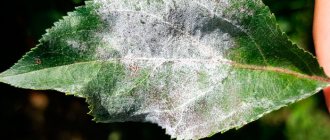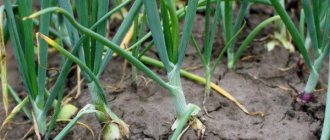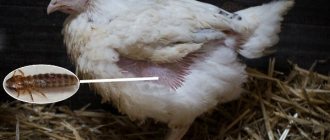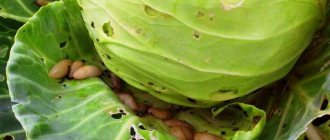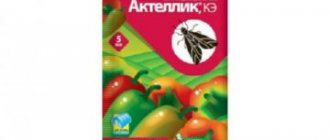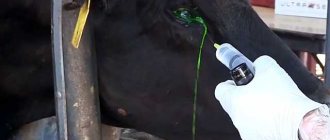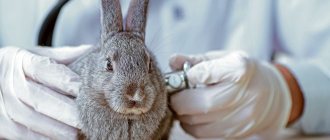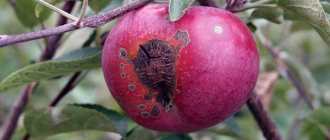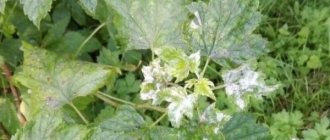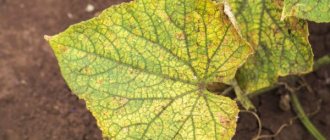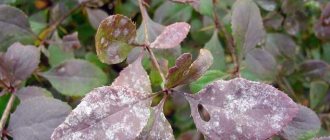Description of the causative agent of the disease
The causative agent of the disease is a fungus from the powdery mildew family (Sphaerotheca mors-uvae (Schw.) Berk et Curt.). The fungus S. mors-uvae affects most species of the genus Ribes, including gooseberries and many varieties of black and red currants. The place of origin of the pathogen is America, from where it was brought to Europe at the end of the nineteenth century, and spread to all areas where currants and gooseberries are grown.
Warming and mild winters increase the risk of developing the disease and its widespread spread.
Why does the fungus attack currants?
Powdery mildew can completely destroy currants
The disease begins for various reasons: weather conditions, temperature, improper care or the properties of a particular plant can affect it. One or several factors can affect the health of currants.
Fungal spores are resistant to low temperatures and difficult weather conditions. The appearance of powdery mildew is always promoted by:
- rainy weather in spring and summer;
- strong wind, which carries fungal spores to nearby shrubs;
- planting plants too close, allowing the disease to spread quickly.
Fungal spores are carried by wind, insects, and rain. Therefore, if the disease is found on one bush, it is worth carefully examining the others. It is important not to miss the moment by starting treatment on time.
Most often, varieties that are genetically unstable to the disease are affected. The reason for this is the low resistance to this type of fungus. In this regard, at the stage of selecting seedlings, you need to pay attention to the characteristics of the variety. In addition, before planting, it is better to disinfect the planting material with drugs that destroy the fungus.
The second reason for the development of the disease is a lack of sunlight when the planting location is poorly chosen or the bushes are close together. This increases the rate of fungal propagation, so it is not recommended to plant currants in too shaded areas.
Removing diseased currant branches
Prevention is effective as a measure to combat powdery mildew: regular pruning, thinning of plants with removal and burning of affected branches. After pruning, the plant will dry out faster after rain, thereby reducing the risk of developing the disease.
An excess of nitrogen fertilizers is another significant risk factor. The high nitrogen content in the leaves becomes a favorable condition for the spread of pests and fungi. Don’t forget that powdery mildew actively develops at a temperature of about 25 degrees and high humidity. If the summer turns out to be rainy, you should not additionally water the currant bushes; on dry days, you should not be overzealous with watering.
Sucking pests and weeds contribute to the rapid spread of the fungus: the former are considered carriers, and the latter are considered breeding grounds. Therefore, task number one is to prevent their excessive accumulation on the site. Treatment of bushes with insecticides helps to avoid the spread of insects and fungus.
Symptoms and harmfulness of the disease
In early spring, white, powdery spots appear on young, developing apical leaves and shoots. Initially there is little plaque, but the fungus grows very quickly. In case of severe damage, shoot growths are covered with a thick mycelial coating consisting of conidia and mycelium. Fruits, especially gooseberries and sometimes currants, are also affected.
Photo of what powdery mildew looks like on currants.
In summer, the marsupial stage of fungal development begins. Over time, the white mycelium, especially on gooseberries, darkens and the coating becomes brown, compact, milky, and in summer and autumn numerous, clearly visible fruiting bodies and fungal mycelium appear in it in the form of small, dense, dark dots.
On heavily infected bushes, shoot growth is completely inhibited, which leads to a severe reduction in yield in the next season. The tops of the shoots often die off, the leaves do not grow, become deformed, and fall off early. Lack of growth is especially harmful for young plants; it delays their growth and the achievement of full fruiting. The affected fruits are of no value, become smaller, distorted and covered with dark spots. At the location of the spots, the berries often burst and rot. If the attack is severe, the entire crop may be affected.
Leaf marginal necrosis
The disease is non-infectious and is caused by excess chlorine in the soil. It appears towards the end of summer. A wide dry strip of ash-gray color forms along the edges of the leaves. There is a clearly defined border between this strip and healthy tissue. If such symptoms are detected in the next season, it is necessary to fertilize with urea twice (in the spring after the buds swell and after the end of flowering) (the norm is 20–30 g/m2).
If the dry strip has a darker color and its border is blurred, then this indicates potassium starvation. Accordingly, next season, at the beginning of summer, you need to add a solution of potassium monophosphate to the soil - add 20 g of fertilizer to a bucket of water and water the bushes (the norm is 20 g/m2).
Resistant and unstable varieties
Currant varieties vary significantly in susceptibility to the disease.
Black currant varieties are very susceptible:
- Ben Lomond
- Ben Nevis
- Ceres.
Varieties less susceptible:
- Ojebin Ojebyn,
- Titania,
- Tiben Tiben,
- Tisel,
- Ben Alder Ben Alder
- Ben Hope,
- Ben Sarek Ben Sarek,
- Ben Tirran,
- Ruben.
White coating on currant leaves
Symptoms of the disease
The first sign of the disease is a white cobwebby coating on currant leaves that appears on the underside. Gradually it moves to young shoots, petioles and berries. Subsequently, the plaque thickens, turns brown and takes the form of felt with black inclusions, which are the fruiting bodies of the fungus.
Berries covered with such a coating become gray in color and become inedible. This suggests that the time to fight the disease has been lost. In this case, in the fall or early spring, it is necessary to remove and burn all infected shoots.
Powdery mildew mainly affects black currants, but infection of white and red currant bushes is possible. The disease occurs in summer, mainly in the first half, and infection most often occurs from infected gooseberries.
The most favorable conditions conducive to the appearance and development of the disease are:
- warm weather 17-28°C,
- high air humidity 90%,
- increased soil moisture,
- neglect or increased planting density,
- shaded places.
In hot, dry weather, the development of the disease slows down somewhat.
Fighting white bloom on currant leaves
The development of the disease can be prevented only at the initial stage, immediately after the appearance of a white coating on the currant bushes. To do this, you should spray infected plants with special preparations in spring or autumn, for example: Topaz, Vectra and others. Processing is carried out several times strictly according to the instructions.
To combat wintering infection, it is necessary to treat the bushes with copper sulfate. Spray the bushes in cloudy weather or in the evening, and the product should be applied to the entire leaf. Processing on hot sunny days is unacceptable.
Folk ways to combat white plaque on currant leaves
There are also folk ways to combat white bloom on currant leaves. Let's get acquainted with the most popular of them:
- Mullein or rotted hay in the amount of a third of a bucket is soaked in 3 liters of water, infused for 3 days, after which it is diluted with water in proportions 1:3. The plants are sprayed with the strained infusion. It is enough to treat the bushes 3 times: before flowering, after flowering and before leaf fall.
- 1 liter of skim milk, whey or buttermilk is diluted with 9 liters of water. The resulting mixture is treated with plants.
- An infusion of wood ash and water, in proportions of 300 g of ash and 10 liters of water. The bushes should be sprayed 2 times with an interval of 10 days. This method is used in early spring. You can also use dry wood ash. It should be applied to the tree trunk areas of the bushes.
To avoid infection, choose currant varieties that are resistant to powdery mildew, for example, Azhurnaya, Vologda, Dushystaya and others.
Development of the disease
In our conditions, the main source of spring infections are fruiting bodies that are released from spores created on infected organs of currants and gooseberries. Infection occurs in the first warm days of spring.
In each environment there is only one bag containing 8 spores. The spores are unicellular, colorless, irregular, ovoid in shape, with dimensions of 20-25 × 12-15 microns.
Primary infections caused by spores are rare. The fungus only affects young shoots, leaves up to 10 days old, and berries. After 2 weeks, visible signs of damage appear.
The appearance of symptoms of the disease in the form of a flaky coating of mycelium and conidial chains of spores gives rise to secondary infections, which, under favorable conditions, can lead to the spread of the pathogen. Conidial spores, such as oidium, form chains; they are unicellular, colorless, ellipsoidal, 24-27 × 16-18 µm in size.
The disease develops best in summer when dry, warm weather facilitates the development, release and spread of spores. The optimal temperature for the development of the disease is 20-30 degrees C. Thickened plantings contribute to the spread of the disease.
In warm climates, the fungus overwinters as mycelium, mainly inside infected buds. Conidial spores can also be the source of primary infections.
Causes
White plaque or powdery mildew is a rather dangerous fungal disease. It appeared on Russian territory back in 1900. The disease appears in the summer, usually in the first half.
The first sign of the disease is the appearance of a white cobwebby coating on the leaves with droplets of liquid. At first, the plaque forms on the back side of the leaves, located closer to the ground, but then it covers the entire bush and moves to the shoots, buds and fruits.
Later, the plaque thickens, becomes brown, and black inclusions appear - the fruiting bodies of the causative fungus. With such damage, photosynthesis slows down significantly, and the plant stops receiving nutrients. The leaves curl, become smaller, and fall off. As a rule, the ovary also falls off along with the leaves.
In the video there is a white coating on currant leaves:
Such bushes endure winter very hard and quite often freeze out, despite protection from frost. Berries covered with plaque turn gray and lose their edibility. As a matter of fact, if the fungus has reached the berries, then you can forget about this year’s harvest. However, the plant itself can still be saved.
Plant infection
The fungus is not selective and equally affects currants, grapes, melons, pumpkins, cucumbers, and gooseberries.
The fungus tolerates cold well and overwinters on fallen leaves. So, even if the plant survives the winter, in the spring the fungus will again move to the young leaves.
The fungus multiplies very quickly, since reproduction is possible both sexually and asexually:
- asexual reproduction - white coating on the leaves - these are conidia, that is, immobile spores. They easily come off the sheet and are transferred to a new place. Thus, the currants are constantly re-infected;
- sexual reproduction - the fruiting body of the parasite can include up to a million spore bags, each of which contains from 4 to 8 ascospores. In spring, ascospores are released and infect the plant.
Conditions for the development of the fungus
Mushrooms are extremely tenacious, but develop most rapidly under certain conditions.
- Warm weather - the most favorable temperature for the development of conidia is from +5 to +28 C, although conidia form most rapidly at +20 C. Infection with ascopores occurs in the same temperature range.
- The incubation period of the disease is 5–10 days and depends on temperature. So, at +15, it takes only 5 days from infection to the maturation of conidia.
- High humidity – from 60 to 80%. Rain as such does not contribute to the development of fungus; during rainfall, the development of the disease stops. However, after rain, the soil strongly evaporates moisture, and it is in conditions of high air humidity that the fungus feels best.
In the video - how to deal with white bloom on currant leaves:
As practice shows, the most favorable conditions for the development of the disease are alternating rainy and sunny days. These conditions contribute not only to the growth of the plant, but also to its rapid infection.
- Density of planting - in this case, the distance between the bushes is too small, which significantly facilitates the transfer of spores from one plant to another. In addition, some leaves, especially low-lying ones, end up in the shade, which contributes to the development of powdery mildew.
- Excess nitrogen fertilizers - excess is the application of more than 0.6 kg per 1 acre in terms of the active component of the fertilizer. An excess of easily digestible nitrogen also contributes to the proliferation of the pathogen.
Young leaves are most susceptible to damage: literally 16–20 days after their appearance, they become victims of the disease.
Observation and assessment of the lesion
Observations of currant and gooseberry bushes should be carried out from early spring and continued until August, with special attention in July and August, when the symptoms of the disease are the most severe. It is necessary to observe lesions that appear on the tips of the shoots and on the leaves, on gooseberries - also on the berries.
By assessing the number of infected shoots in early spring, the degree of primary infection can be determined. Further observations should be carried out during the growing season, before and after harvesting.
The following lesion rating scale is used
| Point | Percentage of shoots and leaves affected by powdery coating, % |
| 0 | 0 – healthy shoots and leaves |
| 1 | 1-6 |
| 2 | 6-15 |
| 3 | 15-25 |
| 4 | 25-55 |
| 6 | more than 55 |
Control is necessary regardless of the severity of the disease, especially when planting susceptible varieties.
Processing stages
The fight against the fungus should begin in early spring. Some gardeners prefer chemical means, some use folk remedies. In practice, it is better to combine them, since chemicals, although effective, are poisonous and it is no longer possible to treat currants with them, for example, after the ovary has formed.
Processing is carried out in accordance with the recommendations, but, as a rule, consists of several stages:
- spring - includes both spraying the bush and treating the tree trunk. Depending on the duration of the drug, several procedures will be required;
- summer involves spraying with chemical compounds before the berries begin to ripen and treating with biological compounds as needed. In any case, the procedure is repeated at least 4 times;
- autumn - includes removing old branches, infected leaves and shoots and burning them. The tree trunk circle is completely cleared of leaves. If necessary, apply phosphorus-potassium fertilizers or wood ash.
Spring
The largest list of work is carried out in the spring.
- Even before the snow melts, the currant bush is irrigated with boiling water. The tops of the shoots are dipped in a container of boiling water. The procedure should take a minimum amount of time, so it is completed very quickly.
A very good way to reduce the risk of the appearance or recurrence of the disease is to replace the top fertile soil with new humus. This option brings very good results, since fungal spores overwinter in the soil.
- The tree trunk circle under the bushes can be treated with tansy solution to destroy the fungus.
- In early spring, before the buds swell, currants are sprayed with a solution of copper sulfate. At this moment, moisture-charging spring watering is carried out.
Until the leaves appear, it is unclear whether the bush is infected or not. But if whitish spots are found on young leaves, treatment should be started immediately.
- Spraying with biological or chemical preparations is carried out immediately. It is best to do it before flowering, as this reduces the risk of disease and berries. One treatment is not enough, since the fungus is very resistant to the action of fungicides, so currants are sprayed at least 3-4 times in accordance with the instructions for the drug.
As a rule, spraying occurs before flowering, during flowering and immediately after. When the berries begin to ripen, it is advisable not to treat currants with chemical fungicides, since they are poisonous. Biochemical preparations can be used until the end of summer. However, procedures involving them have to be repeated much more often. Find out if you can freeze leeks for the winter using this link.
Spraying requires either a very good powerful spray bottle or a soft brush. It is necessary that the drug gets on both sides of the sheet, so the treatment must be carried out very carefully.
Prevention measures
- Plantings should be made from resistant or less susceptible varieties.
- It is important to provide the bushes with appropriate growing conditions, a sunny and ventilated position. Currants should not be grown in places where there is high humidity and frequent fog (for example, in recessed areas).
- Dried bushes need to be uprooted.
- When watering, you should avoid irrigating entire bushes - it is better to apply water directly to the soil.
- Avoid spreading weeds. Plantings need to be weeded regularly to prevent weeds from causing excessive thickening, making it difficult for them to dry out in the wind.
- When planting, currants should be planted at the correct distance so that the bushes do not grow too densely (1.5 meters spacing between bushes is recommended).
- Regular thinning of bushes, removal of old shoots and overly thickened ones.
- Rational phosphorus-potassium fertilizer. It is necessary to apply nitrogen fertilizers in a limited manner, avoiding their excess.
- Digging the soil under the bushes in autumn and spring.
Currant resistance to disease increases when high doses of potassium and phosphorus fertilizers are applied.
Mr. Summer Resident recommends: currant varieties resistant to powdery mildew
Gardeners often look for varieties that suffer from this disease less often than others. Good immunity will reduce the time spent on treatment and allow you to get a bountiful and full harvest. Thanks to the work of breeders, it was possible to develop a sufficient number of varieties of currants that are resistant to powdery mildew. The main characteristics of the best representatives can be found in the table:
| Name | Bush height (cm) | Fruit weight (g) | Peculiarities |
| Binar | 170-190 | 1.2-1.4 | Suitable for cold regions, with sourness. |
| Summer resident | 80-120 | Unpretentious, resistant to pests. | |
| Ilya Muromets | 200 | 1.8-3 | Large berries. |
| Temptation | 120-150 | 1.7-2.5 | Sweet taste, high amount of vitamin C. |
| Selechenskaya | 2.5-4.5 | Successfully tolerates frosts. | |
| Titania | 1.5-2.5 | Suitable for preparations, well preserved. | |
| Ceres | 100-120 | ||
| Kupalinka | 170-190 | 1.4-1.8 | Compact, not spreading bush. |
| Charm | 150-180 | 1.8-2.2 | High yield. |
When the first signs are detected, the gardener must take measures to reduce the number of fungal spores and protect bushes and berries.
Powdery mildew is a serious disease of currants that occurs in the absence of proper care and attention. However, by studying information about the manifestations of the first signs of the disease and choosing an effective method of combating the fungus, you can not only cure the plant, but also save most of the harvest.
Treatment of the disease
To get rid of powdery mildew, control methods require complex ones, combining agrotechnical techniques, chemical and biological methods of currant protection, and folk remedies.
Removing affected parts of the plant
It is necessary to cut and remove infected shoots from the plant to reduce the amount of primary infection. It is carried out in winter or early spring, it is especially important in plantings of currants and gooseberries, where the disease occurs with high intensity. Removing infected shoots significantly increases the effectiveness of chemical protection.
It is also necessary to remove all fallen leaves and infected fruit. They need to be thrown away, it is better to burn them.
Attention! Parts of the plant affected by the disease should not be thrown into compost.
How to treat seedlings?
If you purchased infected planting material, you need to remove the diseased shoots of the plant. Healthy shoots are treated with a one percent solution of copper sulfate, soaking them for 5 minutes, followed by rinsing with running water.
Purchased seedlings can be sprayed for prevention with a solution of soda ash (prepare a 0.4% solution). Spraying is carried out 5 days after planting, then after the first leaves bloom and then every 2 weeks.
Chemical protection - general principles
Preventative treatments begin on currant plantations during the flowering period and continue every 10-14 days, depending on:
- speed of plant development,
- fungicides used,
- atmospheric conditions,
- waiting period for the drug.
If the first symptoms of the disease are observed, the bushes should be treated with plant protection products. Treatment can be carried out from the beginning of inflorescence development (when the flower buds are covered with light scales) until the end of the flowering phase (all petals have fallen), before the development of fruit buds and after harvesting. Treatment is carried out depending on the recommendations contained on the label of this plant protection product while maintaining the waiting period before harvesting.
Attention! Spraying should be done in the evening after the bee has left or early in the morning.
To protect young currants, post-harvest treatments are also necessary to prevent damage to the tops of young shoots. Recommended fungicides are benzimidazole compounds and ergosterol biosynthesis inhibitors (EBIs), as well as sulfur and strobilurins. In order to prevent the emergence of resistant forms of the fungus, it is necessary to alternate the use of fungicides with different mechanisms of action.
Attention! The effectiveness of spraying is achieved only by using good sprayers that provide high-quality coverage of plants with the sprayed liquid. This is especially important in plant protection.
Treatment scheme
If sensitive varieties infected with powdery mildew are grown in the garden, and the disease has appeared in previous years, it is necessary to carry out a series of sprays in accordance with the plant protection program. Disease risk assessments should be based on observation of shoot tip infections in early spring.
Treatments are carried out on the following dates:
- before flowering;
- after flowering;
- after harvest.
Before flowering
Spray with Topsin or Nimrod fungicides. The drugs are used according to the instructions. Also in the spring, a month before the buds open, you can spray the bushes and the soil under them with iron sulfate (5-6%).
After flowering
Spraying should be carried out as soon as possible after flowering, using the following preparations:
- Topsin M 500 SK,
- Nimrod 250 EC,
- Score 250 EC,
- But (Zato) 50 RG.
Currently, the most effective control agent on the market, available in a version for gardeners, is Topaz (Topas 100 EC). Currently, the systemic fungicide Topaz 100 EC (containing 100 g of penconazole per liter of product, a compound from the triazole group that acts as inhibitors of ergosterol biosynthesis - IBE) can be used in home gardening.
For currants: black, red, white (against American powdery mildew) - you can use Topaz in a single dose of 5 ml per hundred square meters up to 2 times a season during the period from the beginning of inflorescence development to the end of the growing season, that is, until the phase when all the leaves have fallen . The waiting period for topaz on currants and gooseberries is 3 weeks.
Subsequent sprays (with other means) should be repeated every 7-10 days, using at least 2 products alternately.
You can also use:
- copper-soap emulsion (2.0% soap + 0.1% copper sulfate);
- soda ash (0.5%) with the addition of soap (0.4%);
- ammonium nitrate solution (0.5%).
In the early stages, the drug Fitosporin is effective, which can be sprayed on the bushes. The drug is available in the form of powder, paste, suspension.
Attention! When choosing a product for spraying during the post-flowering period, you should be aware of the waiting period (the period that must pass from spraying to the date of harvest when it is safe to eat).
Waiting times for individual medications
| Drug name | Waiting period, days |
| Topsin | 14 |
| But | 14 |
| Nimrod | 21 |
| Score | 21 |
The waiting period before harvest must be strictly observed! Typically, spraying is completed 3 weeks before picking the berries.
After harvest
Spraying begins immediately after currant harvest and is repeated every 10-14 days. The above drugs can be used.
Attention! The drugs Nimrod, Skor, But can be used no more than 2 times per season.
The number of sprays against currant powdery mildew is very high and this is certainly not conducive to our health or environmental protection. If currant bushes are constantly sick, it is better to remove them and plant a resistant variety or refuse to grow this bush.
Timing of treatments for powdery mildew on currants
During the entire growing season, currants need to be sprayed three times. It is important to do this correctly and in a timely manner and in the following sequence:
- Spring is the best time to treat the plant: the drugs cause minimal harm and actively fight fungal spores and prevent them from forming.
- In summer, during the period of abundant flower formation and berry development. You must be careful not to use strong chemicals that can be deposited in the fruits and enter the human body, causing poisoning.
- In the fall, after harvesting and removing cut parts of the plant to prevent infection in the next season.
The treatment must be carried out by generously wetting all surfaces of the sheet using a spray bottle or a wide brush. It is better to do this in the evening in clear, not damp weather according to the following scheme: at least 1 time a week, for a month.
Biological control measures
Proponents of growing berries using an environmentally friendly method can use biological control techniques to cure the plants - water the bushes with slurry or rotted mullein. Bacteria are bred in manure to destroy the fungus.
For treatments, prepare a solution of mullein (25-50%). Fermented slurry is diluted with water in a ratio (1 to 1). 3 sprays are carried out with mullein solution:
- before currant blossoms;
- after flowering;
- in preparation for winter, before leaf fall.
Chemicals and biofungicides
Potent fungicides are diluted strictly according to the instructions. Exceeding the dosage is dangerous. When working with chemicals, use protective gloves and a mask.
In case of advanced disease, currants can be treated with the following chemicals:
- Skor is a broad-spectrum agent that allows you to destroy not only powdery mildew, but also spotting. Weather conditions do not affect the result of exposure. The activity of the drug is observed 2 hours after treatment. A solution is prepared from 2 ml of liquid and 10 liters of water. 2-3 procedures are carried out with an interval of at least 10 days.
- Previkur penetrates the foliage, accumulates in their tissues, and destroys the mycelium. The composition is prepared from 5 ml of Previcur and 1 liter of water. Spray the foliage on both sides every 10 days. Treatment is necessary until the fungus is completely destroyed.
- Raek is a systemic fungicide that begins its work 2 hours after processing the currants. Containers from 2 ml to 1 liter are available for sale. The mixture is prepared at the rate of 2 ml per 10 liters of water. On average, an adult bush requires 3 liters.
- Topaz is a fungicidal drug that stops the proliferation of fungi and the germination of spores. For processing, dissolve 2 ml of emulsion in 10 liters of water.
- Fundazol prevents the development of spores and prevents the spread of the disease. Spraying is recommended before the inflorescences bloom and after picking the berries. To prepare a solution for 10 g of product, take 10 liters of water.
- Cuproscat is a powerful drug belonging to the chemical class of inorganic substances. Today it is recognized as one of the effective copper-containing products that quickly rid any crop of fungus. Due to the formation of a stable film on the surface, reliable protection of the plant is ensured under any unfavorable conditions. For 1 liter of water, 6 ml of concentrate is required.
It is recommended to periodically replace the powdery mildew remedy, as fungi develop immunity to the drugs. Also, not all chemicals are compatible with each other; they should be tested for undesirable reactions (precipitation, separation, etc.).
Biofungicides are less effective, but safe for nature and humans. This treatment must be repeated every 7-20 days. The drugs are washed off by rain and do not have a long-lasting effect. Examples are Fitosporin, Gamair, Planriz, Baktofit.
Folk remedies
Gardeners, according to reviews, have long been using folk methods to defeat fungal diseases in the early stages of development. When the disease has significantly affected the plants, it is impossible to do without chemicals.
- A product based on potassium permanganate . Dissolve 5 g of potassium permanganate in a bucket of water, stirring thoroughly so that no crystals remain. Currant bushes are sprayed with the solution from a spray bottle.
- Baking soda solution . Thoroughly dissolve 2 tablespoons of baking soda and half a piece of grated soap in a bucket of water. The bushes are sprayed with the solution no more than 3 times every 10 days.
- Iodine solution . A bottle of iodine is dissolved in a bucket of water and the currants are processed.
Knowing how to deal with powdery mildew, what to do at the first signs, you need to carry out all agrotechnical techniques in a timely manner, which will allow timely treatment, saving and preserving the harvest.
Prevention of powdery mildew in currants
To prevent currant disease and the fight against it from causing problems for the gardener, preventive measures are very important:
- if necessary, clear the area of last year’s residues and weeds;
- treat plants with a solution containing soap and ash, another remedy is copper sulfate;
- regularly examine for the first signs of disease;
- disinfect new purchased seedlings and soil.
You can also adjust the growing conditions of the plant:
- water only after the substrate has completely dried;
- In the spring, prune dense bushes; plant specimens located too close to each other;
- add fertilizers containing phosphorus and potassium or eliminate them altogether;
- tear off leaf blades located very close to the ground;
- observe crop rotation;
- give preference to varieties resistant to powdery mildew.
These actions will help prevent disease and provide the plant with protection for the whole season.
White coating on currant leaves. Treatment and prevention of the disease
Even experienced gardeners periodically encounter a white coating during the growing process. This is a fungal disease called powdery mildew or oidium. If special care is not immediately provided, it completely destroys not only the berries, but also the plant itself. It is necessary to begin treatment of white plaque on currant leaves at the first symptoms of damage to the bush.
Powdery mildew is caused by erysifaceae or powdery mildew fungi. Mycelia are transferred to healthy shrubs by insects, wind and water, and are carried on garden tools or human clothing.
Optimal conditions for the development of the disease are:
- warm air temperature (15°C – 30°C);
- high humidity (60% – 80%);
- planting density (distance between bushes less than 1 m);
- excess amount of nitrogen fertilizers (more than 20 g per 1 m²).
When infected with powdery mildew, a characteristic white coating appears on currant leaves. As the disease develops, it gradually covers the branches and covers the berries of the plant. The foliage turns gray with brown or brown spots. The affected young shoots do not develop and are deformed, and the leaves curl, dry out and subsequently fall off.
Fungal spores do not die at low temperatures; they persist on fallen leaves and soil, multiply quickly and lead to the death of the plant in a few years.
Treatment of powdery mildew
Depending on the stage of development of the fungus and the degree of damage to the currant, plaque can be combated using chemicals, folk remedies and mechanical treatment.
Mechanical methods of combating the disease include:
- planting bushes growing too close to each other;
- replacing the top layer of soil under the affected plant;
- regular weeding;
- pruning damaged branches and removing affected foliage.
Chemical treatment consists of spraying the infected currant bush with fungicides. For protection and treatment, drugs such as:
Using pesticides, you can preserve the plant even with a high degree of disease development.
Folk remedies are effective at the early stage of currant damage. Most often, when a white coating is detected on the leaves, the bushes are treated with solutions of:
- copper sulfate and salt;
- potassium permanganate (potassium permanganate);
- soda ash and crushed laundry soap;
- wood ash.
This treatment is less effective compared to spraying with chemicals, but does not harm the health of the plant and humans.
Prevention of currant disease with powdery mildew
Comprehensive prevention helps protect currant bushes from infection with powdery mildew. In order to protect the plant you need:
- disinfect seedlings before planting using preparations that contain copper;
- destroy damaged shoots;
- in the spring, dig up the soil and remove overwintered leaves;
- water the currants in the first half of the day and only after the top layer of soil has completely dried;
- treat garden tools with disinfectants;
- apply fertilizers containing potassium and phosphorus to the soil;
- Carry out scheduled spraying of currants (it is better to treat the bushes using traditional methods).
To detect the appearance of fungus in the early stages, plants must be periodically inspected. In addition, by choosing varieties for planting that are resistant to powdery mildew, you can reduce the risk of disease already at the time of purchasing planting material.
Why do currants need pruning?
The procedure is necessary, just like fertilizing and moistening the soil.
Pruning currants in the fall allows you to:
- increase productivity;
- accelerate the growth of new branches, and, consequently, the quality of the fruit;
- provide a sufficient amount of light, which will allow the bush to grow and develop normally, and bear juicy, sweet, large fruits.
Thanks to timely and correct pruning of currant shoots, the flowering time is extended, so that the plant can bear fruit for 2 decades.
Mistakes gardeners make in autumn care of currant bushes
Among the most common mistakes in caring for currants in the fall are the following:
- Adding fresh manure as a top dressing
. This is the main mistake, especially for novice gardeners. It should be applied not in autumn, but in winter, when the shoots have stopped growing and cold weather has set in. When there is stagnation of melt water in the garden plot, it is strictly not recommended to apply manure, since all useful elements will be washed out. There is simply no point in such feeding. - The next common mistake is applying large amounts of natural fertilizers
. As a result, all energy will be spent on foliage growth, and bud formation will be suspended. This will prevent you from fully preparing for the wintering stage. In addition, too dense bushes, according to the observations of experienced gardeners, are not characterized by high yields.GOOSEBERRY!
Gooseberry Date Gooseberry Prune Gooseberry Commander - The third typical mistake is simply breaking off branches instead of pruning with special tools
. Such branches will hurt in winter and will not be prepared for spring. For pruning, be sure to use sharp pruning shears or special garden shears. For thicker branches - saws. - The fourth mistake is using artificial materials
, such as synthetic fabrics, for covering. Such shelter does not provide adequate air access and can cause the death of the plant. It is best to use natural materials such as spruce branches, foliage or agrofibre. - The fifth mistake is incorrectly chosen timing for pruning currants
, when if it is late, the bush may simply freeze. Pruning ahead of time will stress the plant, which will affect wintering and yield.
By properly caring for currants, you can achieve high yields of tasty, juicy and healthy fruits. It is necessary to prune currants correctly, apply fertilizing in a timely manner, carry out preventive measures against diseases and pests, and most importantly, ensure proper preparation for winter.
It is important to pay attention to whether the currant belongs to a particular variety, since each has its own care characteristics and characteristics.
Loosening and mulching
Mulching is a simple agricultural technique. Its use can increase productivity and protect currant bushes from diseases and pests.
Photo of mulching currants
Positive aspects of mulching:
- long-term retention of moisture in the soil when there is no evaporation;
- stopping the growth of weeds, therefore, they do not need to be removed and no time is wasted on this;
- softens the negative impact of low and high temperatures on the soil;
- improves soil structure, which leads to a healthy surface (no erosion) and also promotes better penetration
- nutrients into the soil, moisture retention, oxygen retention.
There are organic and inorganic mulches.
Each has its own advantages and disadvantages associated with its features.
INTERESTING TO KNOW!
Red spots on currant leaves
Organic
In addition to being an excellent shelter, it also perfectly nourishes the soil, activating the work of microorganisms.
Organic mulch includes:
- grass;
- sawdust;
- needles;
- tree bark.
Photo of mulching currants with sawdust
Inorganics
Inorganic mulch includes:
- spanbel;
- small crushed stone;
- lutrasil;
- agrospan;
- spunbond
Photo of mulching currants from inorganic materials
The following fertilizers must be applied under the mulch layer:
- humus;
- mineral fertilizers;
- well-rotted compost.
When mulching currants, it is important to follow the following rules for the procedure to be effective:
- layer thickness of at least 15 cm;
- there should be no seeds in the mulch, otherwise they will germinate and produce excess vegetation;
- using only healthy material.
